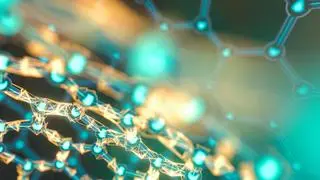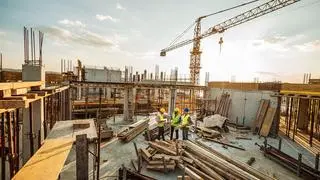It was a tiny experiment, but it made the world sit up and take notice.
Because, if taken to fruition, it has the potential to replace up to 20 per cent of the coke used in steel making with hydrogen — a very big deal in reducing carbon dioxide emissions.
On April 23, Tata Steel announced that it successfully injected a small quantity of hydrogen into one of its blast furnaces (6 kg per tonne of hot metal, for four days). Globally, only two such attempts have been reported before. The first was a 2015 Japanese project called Course50, which involved indirect injection of hydrogen in the form of coke oven gas. The other was a 2021 experiment at the German company Thyssenkrupp, where 0.5 kg of hydrogen per tonne of hot metal was injected for a few hours. Neither compares with what Tata Steel did in scale or duration.
Related Stories
Supercritical carbon dioxide can flush out oil from depleting wells
Underground carbon sequestration gets a new improved process from IIT-Madras researchers“It was a resounding success,” Dr Debashish Bhattacharjee, Vice-President (Technology and R&D), Tata Steel, told Quantum. The experiment generated “enormous amounts of data”, he said, adding that it graduated “from pen-and-paper to real life”.
Given the grave concerns over climate change, replacing carbon dioxide-emitting coke with hydrogen has become the holy grail of the steel industry, which, according to the International Energy Agency, emitted some 2.8 billion tonnes, or about 7 per cent of the global emissions of the greenhouse gas from energy use in 2020.

Debashish Bhattacharjee, Vice-President (Technology and R&D), Tata Steel
On paper it is easy. Carbon in coke pulls oxygen away from iron ore to leave behind pure iron; hydrogen does just the same, but with no greenhouse gas emissions. The problem, however, is that the world has invested billions of dollars in building huge blast furnaces to make steel.
Blast furnaces don’t care how little iron there is in the ore, so you can use low-grade ores (which are predominant in India). But putting hydrogen into blast furnaces is fraught with difficulties. Hydrogen needs external energy (endothermic) and the reactions inside the blast furnace are very different, leading to issues of structural stability. (It is easier to use hydrogen with the electric arc furnace, but these require high-grade ores.)
“As long as you have blast furnaces, you would need coke,” says Bhattacharjee.
While you can’t replace coke with hydrogen in a blast furnace, you can replace a part of it, and keep increasing that part till you cannot do it any more — that is, until the structural stability becomes an unavoidable issue.
Related Stories
Thermo-chemical upcycling of crop residues
IIT-Madras devises three clean means of extracting biochar, activated carbon, and syngas from farm wasteTata Steel (indeed the global steel industry) knows that the way forward is to replace as much coke as possible with hydrogen (preferably, green hydrogen) and deal with the attendant carbon dioxide emissions through other means, such as fixing the gas in some useful compound or burying it underground.
A global first
Tata Steel’s experiment is a significant step in that direction because, for the first time, this quantity of hydrogen (though not green) has been injected into a live blast furnace for four days. The experiment has “added to our knowledge”, says Bhattacharjee. “We know what to look for, which sensors to use, what will work, and what will not work.”
He stresses that the safety issues are equally important. Hydrogen, which can catch fire, must be handled with care. Tata Steel has learned to check for leaks using helium. During the experiment, there was no safety-related incident.
Tata Steel is currently doing a lot of data crunching — hence it does not wish to give out more details, but once the technology is mastered, it is possible to replace a fifth of the coke used today with hydrogen.
It is learnt that the global steel industry has been asking the company for more information about the experiment.
Meanwhile, Tata Steel is also experimenting with other furnace charges, such as biochar, coal-bed methane and coke oven gas (like the Japanese).
At the other end, Tata Steel is trying to neutralise the unavoidable carbon dioxide emission by injecting it into cooling towers, where the gas becomes carbonates of calcium or magnesium, which can be slagged off and sold.
HIsarna project
‘HIsarna’ is the name that Tata Steel has chosen for the radically different route of steel making it has invented, at its Netherlands plant. It uses coke, but the gas that comes out of the furnace has a high concentration (80 per cent) of carbon dioxide, making it amenable to capture and neutralisation.
At present, Tata Steel has a small pilot plant in The Netherlands, but Bhattacharjee says that the company will put up a “demonstration plant” in India that is five-times the size of the one in The Netherlands.









Comments
Comments have to be in English, and in full sentences. They cannot be abusive or personal. Please abide by our community guidelines for posting your comments.
We have migrated to a new commenting platform. If you are already a registered user of TheHindu Businessline and logged in, you may continue to engage with our articles. If you do not have an account please register and login to post comments. Users can access their older comments by logging into their accounts on Vuukle.